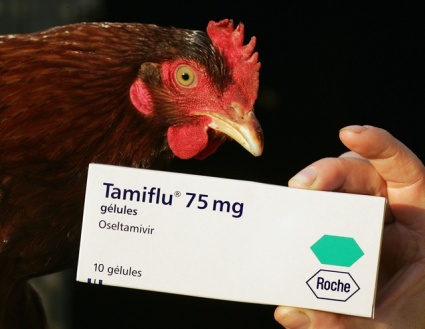
Avian bird flu (H5N1)
The so called bird flu is an influenza A virus which is mainly found in birds and is highly contagious amongst them, It can be spread from bird to bird by saliva, faeces and contaminated surfaces. Once contracted by a bird the mortality rate is about 100% within 48 hours. The severity of the virus in birds sparked much attention from the world health organisations and vets. It was feared that the virus could mutate and spread to humans and eventually from human to human. If in the case of the later occurring the world could face a serious influenza pandemic putting millions of lives at risk. The H5N1 avian virus does not usually infect people however some infections have occurred as a result of direct contact with infected birds or surfaces. It is thought that no human-human transmission has occurred although there have been several reports this may have been the case especially in Asia.
In humans the virus seems less severe than that in birds with a mortality rate of about 60%, so far the most cases have been reported in Viet Nam and Indonesia. The total WHO confirmed cases were 227 on the 16/6/06 with 129 confirmed H5N1 mortalities. This number is likely to be slightly higher due to poorer control over infectious diseases in developing countries. The number of cases has taken a sharp rise in 2006 with the spread to Europe.
In 2006 governments started to release emergency plans to deal with a full scale human pandemic of H5N1. The most widespread current changes have been that domestic birds are fed indoors and kept isolated from wild birds as much as possible, and a ban on exportation and importation of birds to other countries. The united states, England and France have pledged millions of pounds in research for an effective vaccine against bird flu. Several vaccines are under consideration and in clinical trial phases, but up to now non is commercially available. It is hoped that by the end of 2006 a prototype vaccine will be available for people most at risk.
The H5N1 influenza virus is resistant to amantadine and rimantadine, two antiviral medications commonly used for influenza treatment. Tamiflu appears as though it may be effective against this strain and preliminary trials show promising results. Further studies are currently underway. However as mentioned tamiflu is difficult to produce and synthesis is slow as such world stockpiles are small. Roch has been hit hard with a demand for tamiflu that it can not meet, and in march 2006 announced its plans for external facilities to start producing the drug under Roch's supervision. It is believed the world stockpile will be 400million courses by 2007. It is hoped that in the case of a pandemic stocks will be high enough to treat the primary infections. Although WHO worst case scenario states that up to 25% of the worlds population could contract the virus in a severe pandemic. Such a serious pandemic has only been seen once in the 1918 Spanish flu pandemic.

24ur.com/media/images/ extra/Oct2005/16070423.jpg